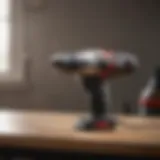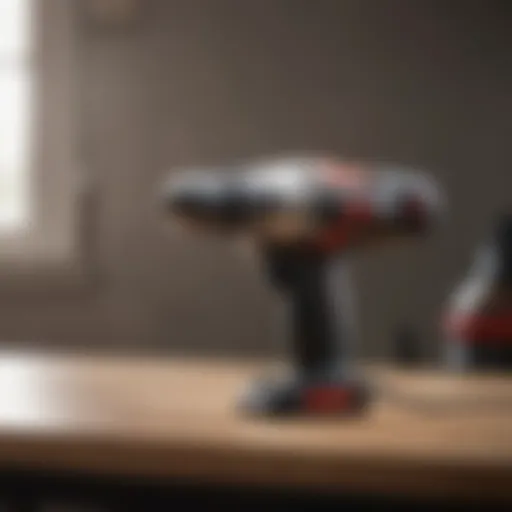Kilz Stain Remover: Application, Effectiveness, and Tips
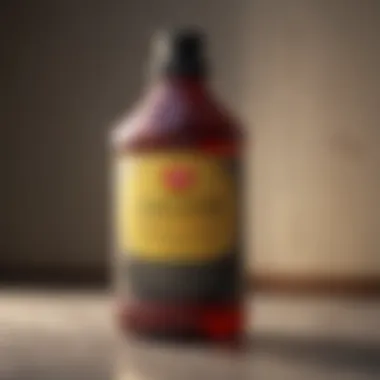

Overview of Topic
When it comes to home improvement, tackling stains can feel like a never-ending battle. Kilz Stain Remover steps in as a reliable ally for homeowners, ready to conquer even the toughest marks on walls, floors, and various surfaces. Stains can come from a range of sources—be it food spills, pet accidents, or simply the wear and tear of everyday life. Understanding how to effectively use products like Kilz not only enhances the aesthetic appeal of a home but also preserves its value and longevity.
The importance of stain removal cannot be overstated. A clean and well-maintained environment reflects one's care for their space. Moreover, addressing stains promptly can prevent them from setting in and becoming more challenging to remove. This article will not only examine the capabilities of Kilz Stain Remover but also provide practical insights into its applications and effectiveness in various scenarios for both novice users and seasoned DIY enthusiasts.
Common Challenges and Solutions
Homeowners often find themselves facing a myriad of challenges when dealing with stains. Some of these common issues include:
- Difficulty in Identifying the Stain Source: Not all stains are created equal; understanding their origin can dictate the removal approach.
- Improper Application Techniques: Mishandling the product can lead to ineffective results.
- Surface Compatibility Issues: Certain products may not suit specific surfaces, leading to damage.
Solutions and Tips to Overcome These Challenges
To tackle these problems successfully, consider these solutions:
- Identifying Stains: Before applying any product, spend a moment to identify the stain type and source. This will help in choosing the right solution.
- Follow Instructions Carefully: Always adhere to the guidelines provided on the Kilz Stain Remover label. Each surface may have specific application instructions that should be followed.
- Test on a Small Area: To ensure compatibility, conduct a patch test on an inconspicuous spot. This can save you from damage to your surfaces.
The key to successful stain removal lies in understanding the nature of the stain and applying the right product in the right way.
Product Recommendations
When diving into the arena of stain removers, it is essential to consider which products stand out in the market. Kilz offers several formulations tailored for different situations, but a few notable options include:
- Kilz Original Stain Blocking Primer
- Kilz Premium Interior/Exterior Latex Primer
- Kilz Restoration Quick Drying Primer
- Features: This product effectively seals stains and prevents bleed-through, making it ideal for heavy-duty tasks.
- Benefits: It provides a strong foundation for topcoat applications and is particularly useful for water and smoke damage.
- Features: Known for its ability to cover tough stains, it is water-based and low in odor, making it suitable for indoor projects.
- Benefits: Its versatility allows it to be used on a wide range of surfaces, both inside and outside the home.
- Features: This quick-drying formulation is excellent for fast projects and covers stains effectively in a short time.
- Benefits: It is great for time-sensitive tasks when immediate results are desired.
Step-by-Step Guides
Putting Kilz Stain Remover to work requires a methodical approach. Here are some practical steps to ensure effective stain removal:
Practical Steps for Application
- Preparation: Gather all necessary supplies—Kilz Stain Remover, a sponge or cloth, a bucket, and protective gear such as gloves and a mask.
- Surface Preparation: Clean the area to remove any loose dirt or debris. This ensures that the remover can penetrate deeply into the stain.
- Application: Follow product instructions carefully. Generally, you will apply the stain remover directly onto the stained area using a sponge or cloth. Allow it to dwell based on the instructions provided.
- Wipe Down: After the recommended time, gently scrub the area or wipe it clean with a cloth to remove residues and stains. Some stains may require repeated applications.
- Final Check: Inspect the area to ensure the stain has been thoroughly removed. If necessary, repeat the process.
By following these steps, homeowners can enhance their stain-removal success, turning what may seem like a daunting task into a manageable one.
Preface to Kilz Stain Remover
Navigating the world of home improvement often involves grappling with stains that seem to have made their home in our walls and surfaces. Here, Kilz Stain Remover steps in as a powerful ally for house owners and housewives alike. Understanding its role not only enhances our cleaning capabilities but can bring a fresh lease of life to various surfaces in our homes. As we dive deeper into Kilz, we’ll explore its significance in the realm of stain removal and what sets it apart from other products in the market.
Understanding Stain Removal
Stain removal is an art and a science wrapped together. It's not just about simply splashing some cleaner on a surface and hoping for the best. Each stain tells a story about its origin—whether it's a splash of wine from last night’s dinner, grease from a cooking mishap, or even the relentless marks left by children making their creative masterpieces. Knowing how to identify the type of stain at hand can drastically influence the cleaning strategy employed.
When we consider chemicals used for tackling stains, we realize the importance of using the right tools for the job. Kilz Stain Remover isn't just another product on the shelf; it's been formulated specifically to target and eliminate stubborn stains effectively. This product gets under the skin of the stain, breaking it down and lifting it away rather than simply masking the problem. This focus on fundamental chemistry in stain removal helps ensure that the surfaces are left clean and ready for whatever comes next.
The Role of Kilz in Home Improvement
In the universe of home improvement, Kilz is something akin to a trusty sidekick. This brand has carved a niche for itself not just as a stain remover, but as an essential component in the greater tapestry of home restoration. From DIY enthusiasts to professional remodelers, the application of Kilz goes beyond removing stains; it serves as the foundational step toward preparing surfaces for painting and renovation.
The key benefits of using Kilz include its powerful formulation and versatility across various surfaces—from wood to drywall. This product doesn’t just clean; it prepares. A well-prepped surface ensures that paints and finishes adhere better, promising durability and a quality finish.
In sum, understanding Kilz Stain Remover means grasping not just its practical applications, but also recognizing its essential role in painting and remodeling processes. Its ability to deliver results sets the stage for successful home improvement projects.
"A clean surface is often the unseen hero of any successful renovation."
Formulation of Kilz Stain Remover
The formulation of Kilz Stain Remover plays a vital role in its effectiveness and usability as a stain removal solution. Understanding how it’s composed gives insight into why it tackles stains with such efficiency, which is especially valuable for homeowners and DIY enthusiasts seeking reliable cleaning solutions. Beyond just the immediate removal of stains, the formula’s characteristics also impact application methods, safety, and environmental considerations.
Chemical Composition
Kilz Stain Remover contains a blend of powerful ingredients designed for specific stain removal tasks. At its core, the product often incorporates solvents, surfactants, and solvents that work together to break down and lift stains from various surfaces. For instance, methanol and mineral spirits are common solvents that can effectively tackle oil-based stains, while surfactants help to emulsify water-based stains, allowing them to be easily wiped away.
Additionally, the inclusion of enzymes has become increasingly popular in stain removers, enhancing their ability to break down organic stains like food or beverage spills. By comprehending these components, users can better appreciate not just how Kilz works but also make informed decisions about its application based on the type of stain they are dealing with.


- Key Chemical Components for Effective Stain Removal:
- Solvents (e.g., Methanol)
- Surfactants
- Enzymes for organic stains
- Fragrance and other modifiers for usability
Each of these elements plays a specific role, and knowing them allows users to gauge which features of Kilz will be most beneficial for their particular cleaning project. The right formulation means less elbow grease and more results, which is often the goal for those tackling tough stains.
Eco-Friendly Considerations
In recent years, eco-friendly practices have gained traction within the cleaning industry, leading manufacturers to rethink their formulations. While Kilz Stain Remover is effective, it has undergone iterations to mitigate its environmental impact. Today, many brands, including Kilz, offer options formulated with fewer volatile organic compounds (VOCs), helping to reduce air pollution and improve indoor air quality.
Moreover, some formulations are designed to be biodegradable, ensuring that application and disposal do not harm the environment. This commitment to sustainability resonates with homeowners who are not just looking to remove stains effectively, but also considering the broader implications of their cleaning products.
"Choosing products that are safer for both your home and the planet is a step towards holistic living."
For many consumers, making eco-conscious choices is as important as the effectiveness of the product in removing stains. Therefore, looking closely at Kilz's formulation reveals a balance between robust stain removal and the growing demand for sustainability.
In summary, the formulation of Kilz Stain Remover combines potent ingredients effectively designed for various stains while accommodating environmental concerns. Understanding these aspects encourages informed choices, ensuring that users maximize both efficacy and safety in their cleaning routines.
Types of Stains Addressed by Kilz
Understanding the types of stains that Kilz Stain Remover can tackle is crucial for anyone looking to maintain or restore their home's surfaces. Different stains not only require different approaches for removal but also different considerations for application and effectiveness of the product. Each stain type presents unique challenges, and knowing these can help homeowners make informed choices. Whether it’s a spilled drink, grease from cooking, or ink from an errant pen, Kilz offers solutions that can effectively lift these blemishes and return surfaces to their intended state.
Water-Based Stains
Water-based stains can come from everyday mishaps. Think about that red wine spill at your dinner gathering or perhaps a child’s enthusiastic drawing with watercolor on a wall. Water-based stains usually don't sink into the material very deep but they can leave behind odor or discoloration. Kilz targets these types of stains effectively through its unique formulation.
Here are some points to keep in mind:
- Quick Action: Kilz works well on water-soluble stains due to its fast-acting formula.
- Surface Compatibility: It’s gentle on most surfaces, making it a reliable choice for walls, carpets, and upholstery.
- Ease of Use: Most water-based stains can be managed effectively with minimal tools.
Oil-Based Stains
Oil-based stains, in contrast, dive a bit deeper into surfaces and can be more stubborn. Think about the greasy splatters from frying foods or motor oil that dripped from your car. These stains may take a bit more elbow grease to remove, but Kilz’s formulation is built to handle such challenges.
Key considerations include:
- Penetrating Power: Oil stains generally require a solution that can penetrate the surface; Kilz manages this adeptly.
- Longer Application Time: It may be necessary to let the stain remover sit for a while to break down the oil properly before wiping.
- Visual Clarity: The effectiveness of Kilz can often mean saving a surface from permanent damage, restoring both clarity and functionality.
Tannin and Ink Stains
Tannin stains, often from beverages like tea or coffee, and ink stains from pens or markers can be particularly persistent. These types of stains require a specialized approach, given their chemical makeup.
Consider the following aspects when tackling tannin and ink stains with Kilz:
- Complex Removal Needs: Due to the nature of these stains, precise application techniques are often necessary.
- Preliminary Testing: It’s advisable to test on a small, inconspicuous area first to ensure the surface reacts well to the product.
- Dual Action: For ink stains, sometimes a combination of techniques—such as blotting and applying the stain remover—can yield the best results.
"By understanding the specific stains Kilz can address, homeowners can ensure they are well-equipped to tackle any mess that comes their way, maintaining their spaces effectively and efficiently."
Each of these stain types represents a unique challenge, but with Kilz Stain Remover in your toolkit, you can feel confident in facing them head-on.
Preparing to Use Kilz Stain Remover
Before diving into any stain-removal task, getting prepared is crucial. This preparation phase can significantly impact the effectiveness of your cleaning endeavor. It’s not just about grabbing the first bottle of Kilz Stain Remover and scrubbing away. A thoughtful approach ensures that the stain is handled correctly, minimizing stress and maximizing results.
Assessing the Stain Type
Identifying the stain you’re dealing with is the first step in your cleaning journey. Whether it’s a coffee spill on the carpet or grease marks on the kitchen wall, understanding the type of stain enables you to select the right method of application and increase the chance of success. A stain that has settled in for a long time may need a different approach compared to a fresh splash. Knowing whether it's water-based or oil-based, for example, will dictate your next steps and determine how Kilz will best help.
Gathering Necessary Supplies
Protective Gear
When it comes to working with cleaning agents, safety is not something to overlook. Wearing protective gear isn't just wise; it's essential. Gloves, for instance, serve as a barrier between your skin and the potent chemicals in Kilz Stain Remover. Selecting nitrile gloves is beneficial as they provide strong resistance against various substances, ensuring your hands are safe while you tackle stubborn stains. Protecting your skin should be a priority — because let’s face it, stained hands are not the badge of honor one desires after a cleaning job.
Cleaning Tools
Having the right cleaning tools can make all the difference when you’re armed with Kilz Stain Remover. A stiff-bristled brush can be your best friend here. This tool is favorable because it effectively lifts ingrained dirt without damaging the surface beneath. Also, it’s worth considering microfiber cloths; they’re gentle yet absorbent, making them popular in the stain-fighting community. The unique feature of these cloths is their ability to trap dirt particles much better than traditional rags. Ensuring you have these tools can save you headaches down the line.
Surface Preparation
Surface preparation is the unsung hero of successful cleaning. Taking the time to clean the area around the stain, remove loose debris, or even test the colorfastness of the material can enhance the outcomes of your stain removal efforts. If you're dealing with a piece of furniture, for instance, dusting it off before applying the remover might seem trivial, but it can prevent further embedding of grit during treatment. A clean canvas lays the groundwork for a successful stain removal process and is a key practice that often gets missed.
"An ounce of prevention is worth a pound of cure."
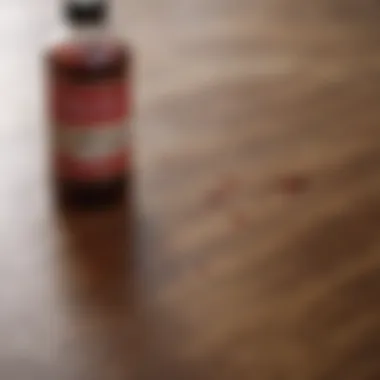

This adage rings true when preparing to use Kilz Stain Remover. Understanding what you’re working with and gathering the right supplies can make all the difference.
By assessing the stain type accurately and gathering necessary protective gear, cleaning tools, and prepping surfaces, you set the stage for an effective application of Kilz Stain Remover. With these steps, you’ll feel not only ready but also armed with the knowledge to tackle those tough stains confidently.
Application Techniques of Kilz Stain Remover
Understanding the correct application techniques for Kilz Stain Remover is paramount in the quest to effectively tackle a variety of stains in your home. Mastering these techniques not only enhances the efficacy of the product but can also lead to better results, minimizing the risk of damage to surfaces. When deploying Kilz, know that the method you choose can significantly influence the outcome of your cleaning endeavors. This section will unfold the various application methods, emphasizing their unique attributes and effectiveness.
Direct Application Method
Step-by-Step Process
The direct application method involves applying the Kilz Stain Remover directly onto the stain without any intermediary steps. It is straightforward and often yields immediate visible results. Many householders prefer this method due to its simplicity and directness. Here’s a brief overview of the step-by-step process:
- Identify the Stain: Start by assessing the nature of the stain. Different stains may require varied treatment approaches.
- Prepare the Area: Clear the area of furniture and other obstructions to allow for comfortable access.
- Apply the Product: Using a clean cloth or sponge, dab the Kilz Stain Remover directly onto the stain. Avoid excessive saturation, as this can lead to spreading.
- Blot the Stain: Gently blot the stain, allowing the remover to work its magic without damaging the surface beneath.
- Rinse: Depending on the stain and surface, follow up with rinsing or wiping with a damp cloth.
This method is a popular choice because it allows for immediate engagement with the problem, often leading to quicker satisfaction in seeing the stain diminish. However, it does require caution to avoid potential damage to the underlying material if the stain is particularly stubborn.
Recommended Tools
When utilizing the direct application method, the right tools can make a substantial difference in achieving optimal results. Here are some recommended tools to have on hand:
- Soft Cloths: Microfiber cloths are ideal for applying the remover since they do not scratch surfaces.
- Sponge: A non-abrasive sponge can help in evenly distributing the product while softening up the stain.
- Spray Bottle: If the stain is widespread, using a spray bottle allows for a more even application without over-soaking.
Choose tools that complement the stain type and the surface you’re treating. A soft cloth might work wonders on painted walls, yet a sponge could be more suitable for tougher surfaces or flooring. The unique feature of these tools is their gentle texture, reducing the risk of scratching or further damaging the area while ensuring efficient cleaning.
Soaking Techniques
Soaking techniques are essential when dealing with more entrenched stains requiring longer treatment time to break down. This method can be transformational in getting rid of residual staining when direct application doesn’t seem to cut it.
Best Practices
To apply soaking techniques properly, consider the following best practices:
- Select the Right Container: Use a container that can hold the stained item, ensuring it is deep enough to fully submerge.
- Dilute if Necessary: Depending on the stain, you may need to dilute the Kilz Stain Remover with water, particularly for delicate fabrics or surfaces to avoid damage.
- Submerge the Stained Area: Allow the stained area to soak, enabling the remover to penetrate deeply into fibers or surfaces.
- Monitor the Time: Check regularly to see how much progress has been made, as prolonged soaking could lead to unintended damage.
These practices are appealing for their thoroughness, as they ensure that the Stain Remover can completely reach its target. It’s important to note that while soaking can be a bit labor-intensive, especially in monitoring progress, it is effective for stains that have had time to set.
Time Considerations
When applying soaking techniques, the time factor is crucial.
- Assess Stain Duration: Be aware that older stains might need more soaking time compared to fresh stains.
- Recommended Soak Times: Usually, a soak of 30 minutes to a few hours can yield good results, but this greatly depends on the stain type.
- Regular Checks: It’s wise to check the progress every so often, as certain surfaces or materials can react differently to extended exposure.
The unique feature about timing is that it adds a level of control over the process. For those who are patient, investing time into soaking often pays off, delivering gratifying results for those stubborn stains.
"Effective stain removal isn’t just about the product used; it’s about how you apply it."
Challenges and Solutions
In the realm of home improvement and DIY projects, tackling stains can often feel like facing a steep hill with a boulder on your back. While Kilz Stain Remover shines as a robust tool in tackling a myriad of stains, it’s not without its hurdles. Understanding these challenges can make the difference between a successful restoration task and a daunting setback. This section aims to clarify some common issues, providing insight and remedies, ensuring that users can approach their stain removal efforts with confidence.
Common Issues Encountered
Not every stain is created equal, and depending on various factors, the efficacy of Kilz Stain Remover may fluctuate. Here are some of the most typical challenges people run into:
- Stubborn Stains: Certain stains, especially those that are older, can dig in like stubborn weeds. Water-based or oil-based stains can resist removal efforts.
- Incorrect Application: Missteps in the application method may lead to patchy results or even damage the underlying surface. Each surface type—wood, drywall, or fabric—may require a different touch.
- Unsatisfactory Results: Sometimes, after all the effort, one might find that the stain persists. It’s a heart-sinking moment that can discourage even the most determined DIYer.
- Chemical Reactions: A few unforeseen reactions might occur when Kilz comes into contact with other cleaners or materials, affecting the desired results.
Troubleshooting Tips
When faced with challenges, it’s crucial to arm yourself with a set of tried-and-true troubleshooting strategies. Here are several useful tips to consider:
- Pre-Test the Area: Before you launch into full removal mode, dab a small, inconspicuous area with Kilz to check for any adverse reactions. This practice is a wise insurance policy, especially for delicate surfaces.
- Use the Right Tools: Make sure to have the right applicators handy. For our tenacious oil stains, tools such as fine scrubbing pads can be your best friends, while gentler approaches suit more delicate materials.
- Patience is Key: Some stains don’t let go easily. If needed, allow the stain remover to sit longer before scrubbing or wiping it off. This gives it the chance to work effectively—sometimes you need to give things a little time.
- Mix and Match: If a particular approach isn’t working, consider combining methods or even trying a second round of stain removal. Whether tackling that tenacious ink stain or a water mark, perseverance often pays off.
- Safety First: Always wear gloves and a mask when using chemical products to minimize any health risks, and ensure proper ventilation.
"The best time to plant a tree was twenty years ago. The second best time is now."
This timeless wisdom plays nicely into the realm of DIY stain removal too. Taking the right steps with Kilz Stain Remover can yield great results, but knowing how to troubleshoot when things go awry is invaluable. By preparing for these challenges and having backup plans in hand, users can tackle stains head-on and restore surfaces to their former glory.
Post-Application Considerations
Cleaning Up
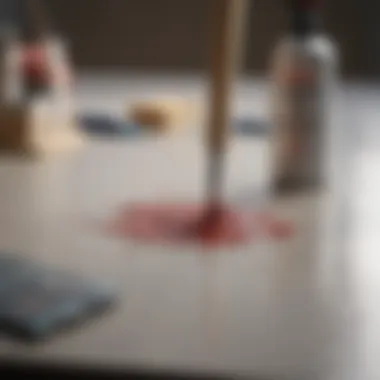

Once you've put in the hard graft with Kilz Stain Remover, it's time to turn your focus to cleaning up efficiently. This step might seem like a chore, but it’s crucial for maintaining a tidy workspace and ensuring lasting effects from your efforts. For starters, ensure you wear your protective gear during this phase as well, just in case there are residues that might irritate your skin.
Think about it this way: if you've just battled a tough stain, the last thing you want is to leave behind a mess. It’s best to start by gathering all the tools you used. Dispose of the used rags or sponges appropriately; don’t toss them in with regular trash if they’ve been soaked with harsh chemicals. Instead, place them in a sealed plastic bag until you can safely dispose of them according to local guidelines.
Next, make sure to clean the tools you used, like brushes or surface scrapers. Submerging them in soapy water can help break down any residual cleaning agents, which will also extend their lifespan. Rinse them thoroughly afterwards, making sure all soap and chemicals are completely gone.
In a nutshell, keeping your environment squeaky clean isn’t just about appearances; it also contributes to safety and efficiency in your home cleanup tasks. An organized workspace can save you time in the long haul and keep your home restoration efforts on the right track.
Assessing Effectiveness
While the visible results are often the first things that jump out at you after using Kilz Stain Remover, it’s essential to dive deeper and assess effectiveness comprehensively. This goes beyond just looking at the surface; it’s about examining whether the stain removal has achieved the desired results.
First off, take a good look at the area you treated. Is there any discoloration left behind? If so, you might need to apply a second round of the product. Don’t hesitate to reapply if the stain seems tenacious—sometimes stains are like that unwelcome party guest who just won’t leave. However, before doing yet another round, always refer to the guidelines provided with Kilz and make sure you're following recommended drying times.
Also, consider the surface you worked on. Different materials may react differently, and while Kilz works wonders on several surfaces, it might need a bit of extra elbow grease for certain tougher ones or older stains. Use your judgment; if something still looks off, don’t just brush it aside. Address it methodically, perhaps even documenting your own experience for future reference—this could serve as an informative guide for yourself or others down the line.
Additionally, remember that some stains are a stubborn lot, and sometimes they tend to resurface. It can be helpful to keep an eye on the treated area over the following days, ensuring the stain doesn’t come creeping back. Documenting your initial assessment alongside follow-up observations could provide valuable insights for ongoing maintenance and preventive measures in the future.
Safety Precautions with Kilz Stain Remover
When engaging in any kind of home improvement task, safety should always sit at the top of the priority list. This is especially true when it comes to using products like Kilz Stain Remover, which, though effective, can pose certain risks if not handled properly. Understanding the safety precautions not only shields you from potential hazards but also contributes to the successful completion of your projects.
Proper safety measures can turn a daunting cleaning task into a manageable one. They help prevent accidents, ensure optimal product effectiveness, and maintain the integrity of your home environment. Keeping this in mind, it’s crucial to be aware of how to handle and store Kilz Stain Remover as well as knowing what to do in case of an emergency.
Handling and Storage Instructions
Handling Kilz Stain Remover requires careful attention to detail. Here are key considerations for safe handling:
- Read Labels Thoroughly: Before using Kilz Stain Remover, thoroughly read the label and safety data sheets. This will give you insight into its properties and precautions.
- Use Protective Gear: Always wear gloves, eye protection, and a mask to shield yourself from potential chemical exposure.
- Work in Ventilated Areas: Whether indoors or out, ensure there is adequate ventilation. Open windows and doors to avoid concentrating fumes.
- Avoid Mixing with Other Chemicals: Mixing different cleaning solutions can result in dangerous reactions. Keep Kilz Stain Remover separate from other products.
Storing Kilz Stain Remover is equally important. Here are some tips:
- Keep Out of Reach of Children: This product should be stored in a locked cabinet or a high place, away from the curious hands of children.
- Avoid Extreme Temperatures: Store Kilz Stain Remover in a cool, dry place. Extreme heat or freezing can alter the product’s effectiveness.
- Seal Containers Tightly: Always close the lid securely after use to prevent spills and contamination.
First Aid Measures
In case of an accident, it’s crucial to have a plan. Here’s what you should do:
- Skin Contact: If you get Kilz Stain Remover on your skin, remove contaminated clothing immediately and wash the affected area thoroughly with soap and water. If irritation persists, seek medical advice.
- Eye Contact: In case of contact with eyes, flush them with water for at least 15 minutes. If symptoms like redness or swelling occur, consult with a doctor promptly.
- Inhalation: If someone breathes in the fumes, move them to fresh air right away. If they have difficulty breathing or exhibit other severe symptoms, call for medical help immediately.
Always keep emergency contact numbers handy so you can act quickly in case of any unfortunate incidents.
Taking the time to understand safety precautions when using Kilz Stain Remover can make all the difference. Being cautious during handling and proactive with first aid can save you from a wealth of trouble, ensuring your home stays safe and clean.
Alternatives to Kilz Stain Remover
When it comes to eliminating stubborn stains, Kilz Stain Remover stands tall, but exploring alternatives provides readers with a broader toolkit. Understanding these options can be crucial for different scenarios or specific stains that might not respond well to Kilz. This section details alternatives, weighing the benefits and considerations that accompany each choice.
Comparative Analysis
Comparative analysis of stain removers is not just a side dish; it's the main course in stain management. Other products on the market offer varying formulations, techniques, and efficacy.
- CLR Pro: Known for its ability to tackle tough stains such as rust and mineral deposits, CLR Pro stands out but may require cautious application on surfaces prone to damage.
- OxiClean MaxForce: This contender is particularly impressive against organic stains like food or grease. It contains a mix of enzymes aimed to break down the stains but might need a second application for tricky spots.
- Zep Stain Remover: This product showcases a blend of solvents, making it effective for oil and grease stains. However, users often need to ventilate the area given its strong scent.
Each of these options has its strengths and weaknesses. It's important to consider specific stains, surface materials, and personal preferences when selecting the right remover. The wrong choice might leave you with more mess than you started with!
"In the realm of stain removal, a well-rounded approach with multiple tools often yields the best results."
DIY Stain Removal Solutions
For those inclined toward more natural remedies, DIY solutions are often a popular alternative. They can be effective, budget-friendly, and less harsh on the environment. Here are a few notable techniques that can get ahead in the battle against stains:
- Baking Soda Paste: Mixing baking soda with a little water can create an effective paste. This works great for absorbing oil stains on fabrics and carpets. Apply, let sit for a few hours, then scrub gently before rinsing.
- Vinegar Spray: A simple blend of white vinegar and water can help cut through grime and odor, particularly on countertops and some fabrics. It's best to test a small area first to avoid any discoloration.
- Dish Soap Mixture: A combination of dish soap and warm water can tackle various stains. It’s particularly handy for food spills on upholstery; just dab it on the affected area without soaking it too much.
Using these methods may take a bit longer than commercial products, and effectiveness can vary based on the stain type and material. However, the satisfaction of crafting your own solution can be rewarding, and no one can argue about the freshness of natural ingredients.
Finale
In the realm of home maintenance, concluding a detailed exploration of Kilz Stain Remover highlights the indispensable role such products play in sustaining the quality and appearance of our living spaces. This article has meticulously covered various aspects—from formulation and efficacy against stubborn stains to practical application and safety measures. Understanding Kilz Stain Remover’s unique attributes allows homeowners to make informed decisions while tackling stains that can otherwise become a blot on the landscape of their home.
Summarizing Key Takeaways
- Broad Spectrum of Stains: Kilz Stain Remover is effective against a wide range of stains, including water-based, oil-based, and those pesky tannin and ink stains. This versatility makes it a go-to product for homeowners.
- Practical Application Techniques: From direct applications to soaking methods, employing the right technique can significantly impact stain removal results. Being mindful of these approaches can streamline efforts and enhance effectiveness.
- Consideration of Safety: Adequate safety measures cannot be overstated. Understanding how to handle and store Kilz, along with knowing first aid steps, is essential in promoting a secure environment, especially when children and pets are around.
- Potential Alternatives: While Kilz stands out, exploring alternatives or even DIY solutions can broaden the toolkit available for home restorations. It's always good to have options at hand when faced with unexpected stains.
- Realistic Expectations: Stain removal is often a journey, not a sprint. Recognizing that multiple attempts might be needed to fully restore a surface can help temper frustrations and set realistic goals.
Final Thoughts on Kilz Stain Remover
The ultimate value of Kilz Stain Remover lies in its practical application in daily life. Whether tackling an old water spot on a ceiling or a stubborn grease mark on the kitchen counter, its formulation is designed to tackle tough challenges armed with the right knowledge. In a world where first impressions count, clean and well-maintained surfaces play a vital role.
Utilizing Kilz Stain Remover not only revives and refreshes your spaces but also boosts your confidence in maintaining the warmth of your home. Achieving a clean finish is more than just aesthetics; it’s about taking pride in your living environment. Remember, with the right product and techniques, you hold the keys to transforming your home into a reflection of comfort and care.






